Smartphones play a significant role in modern life, particularly in social interaction, entertainment, and learning, which has led to an increasing reliance on them, especially among adolescents. For instance, among Spanish children aged 10-15, approximately 70% own a smartphone, and ownership rises with age; among teenagers 16 and older, it reaches 99.1% (1). According to the latest 2024 survey on the scale of internet users in China, the number of Chinese internet users grew by 7.42 million compared to 2023, with adolescents representing the largest group, accounting for 49% of the new internet users (2). Despite the convenience that smartphones offer in daily life, research has shown that frequent use and dependence on smartphones can lead to addictive behavioral patterns (3, 4). Smartphone addiction is defined as the use of smartphones to fulfill deep-seated needs (such as dependence, habitual use, and addictive behaviors), to the extent that individuals find it impossible to accomplish essential daily chores without utilizing their smartphones (5). Studies indicate that 31.6% of adolescents in South Korea are addicted to smartphones (6), and Over 25% of Chinese teenagers suffer from smartphone addiction (7). Smartphone addiction can severely impact adolescents’ physical health (8), academic performance (5), emotional well-being (9), and sleep quality (10).
Studies have indicated that negative emotions such as loneliness and anxiety are predictive factors for college students’ addiction to smartphoness (11). The cognitive-behavioral hypothesis states that behaviors can also reciprocally influence emotions and cognition (12). Therefore, individuals exhibiting addictive smartphone behaviors may struggle to control excessive use, which may result in negative emotions such as worry, anxiety (13), and depression (14). These negative emotions, in turn, can further affect sleep quality (15). College students often engage in frequent internet use (16) and tend to have weaker self-regulation skills (17), making them more susceptible to smartphone addiction. Poor sleep quality is significantly influenced by smartphone addiction (18, 19), and existing research has confirmed a direct association between sleep disorders and smartphone addiction among adolescents (20). For instance, a bidirectional relationship exists between smartphone addiction and sleep disorders (21, 22). Some studies also indicate that smartphone addiction and sleep quality are significantly positively correlated (23). Specifically, young individuals with smartphone addiction are are more likely to develop sleep disorders (20).
In summary, previous studies have provided valuable insights into smartphone addiction’s association with sleep disorders. But little is known about the mediating and regulating mechanisms that underlie this association. The purpose of this study is to investigate whether the mediating role of negative emotions and the moderating role of gender can reduce the impact of smartphone addiction on sleep disorders, offering valuable insights for the prevention and management of sleep disorders caused by smartphone addiction among college students.
1.1 The mediating role of negative emotionsEmotions are a combination of brain and body responses that manifest as our feelings and outward appearances (24). In general, people can easily distinguish between positive and negative emotions (25). Negative emotion is a relatively low emotional response (26), including depression (27), anger, frustration and other negative psychological effects (28). In recent years, there have been a number of studies linking it to smartphone addiction (29, 30). In the beginning, smartphone use can be enjoyable and exciting for individuals (31). However, when the phenomenon of smartphone addiction occurs, it is often impossible to control excessive dependence on smartphones, which leads to negative emotions being activated (32), making it seem anxious (33) and depressed (34, 35). At the same time, smartphone addiction may exacerbate an individual’s fear of missing out on information (36), and may even lead to depression, anger, and, in severe cases, an increased risk of suicide (37).
Many factors can influence sleep, including nutrition, use of stimulants (alcohol, caffeine, and tobacco), physical activity levels (38), shoulder pain and disability (39), physical environment, and social environment (40). In addition, emotional state is also an important factor affecting sleep, and different emotional experiences may even lead to the occurrence of sleep disorders (41). Sleep disorders are physiological problems resulting from disturbances in the regulation mechanisms of the sleep and wake cycles, and are often characterized by symptoms such as insomnia, sleep deprivation, poor sleep quality, and impaired daytime functioning (20). Negative emotions are strongly associated with sleep disorders (42). For example, research has shown that brain structures associated with negative emotions are significantly correlated with sleep disorders in normal young people (43). Previous studies have also confirmed the influence of negative emotions such as anxiety (44), depression (45) and stress on sleep disorders (46). For example, studies have found that college students with depressive symptoms are more likely to have sleep disorders (47). In addition, evidence suggests that college students with high levels of negative emotions are at a greater risk of experiencing sleep disorders (36).
Research has revealed a big positive association between smartphone addiction and sleep disorders. Psychological resilience and physical exercise behavior play a partial mediating role in this relationship (10, 48). Therefore, the effect of smartphone addiction on sleep disorders may be indirectly through mediating variables rather than directly. This finding suggests that further exploration of the mediating effect of smartphone addiction on sleep disorders in college students is needed, with additional empirical studies required to uncover the underlying mechanisms.
1.2 The moderating role of genderThe concept of “gender” is deconstructed into four aspects: biological/physical traits, self-defined gender identity, legal gender, and gender expression (49). The term gender is a straightforward description of some of the most basic human characteristics, but when individuals are asked their gender they are usually given two choices: male or female (50). The gender differences show up in different individual variables. Specifically, a number of studies have observed that smartphone addiction varies by gender, such as studies that categorize smartphone users into three potential categories, while women are placed in the high-risk category where smartphone addiction is more prevalent among women than men (51). A study of Chinese college students found that female undergraduates were more likely than male undergraduates to use smartphones excessively (52). Gender differences also show up in negative emotions. The study found that female undergraduates’ average anxiety levels were noticeably greater than those of male students (53). Additionally, research indicates that female undergraduates experience higher levels of stress than their male counterparts (54). These results suggest that female undergraduates may face more negative emotional challenges. This gender difference is also reflected in sleep problems, which show up as early as infancy and continue into childhood and adulthood (55), and are particularly pronounced in young adults (56). Specifically, female college students are less sleep efficient than male college students (57). Moreover, female undergraduates are more likely to experience sleep disorders than male undergraduates (58).
Based on the above research, the role of gender in the three variables of smartphone addiction, negative emotions and sleep disorders should not be ignored. Although previous research has revealed significant differences between gender in individual variables, there is still insufficient research on how gender regulates the relationship between these variables. With this in mind, this study aimed to explore whether gender is a moderating factor that influences the direct and/or indirect association between smartphone addiction and sleep disorders. By constructing a theoretical model that incorporates gender-mediated effects, this study will provide a new perspective for understanding the role of gender in the path of smartphone addiction-induced sleep disorders and may reveal gender-specific prevention and intervention strategies.
Hypothesis 2: Smartphone addiction’s association with sleep disorders, both directly and indirectly, varies by gender, with negative emotions acting as a mediating factor.
Figure 1 displays the study’s hypothesized model.
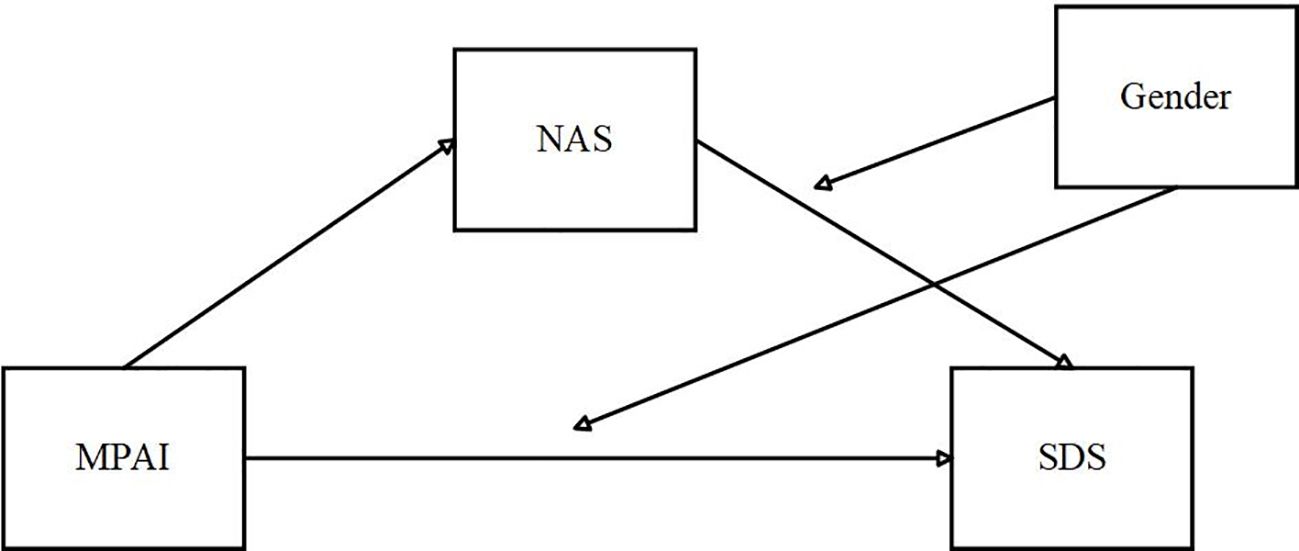
Figure 1. Model of the hypotheses in this research.
2 Methodology2.1 Participants and processesUsing cluster sampling, an online questionnaire was administered from October 8 to October 28, 2024, to measure smartphone addiction, negative emotions, and sleep disorders among students pursuing various college degrees across 20 provinces and cities. Prior to the survey, teachers provided guidance through class WeChat groups, obtained informed consent from participants, and introduced the purpose, use, and significance of the data collected while emphasizing test anonymity, confidentiality, and voluntary participation. Participants were given full autonomy to discontinue or opt out of the questionnaire at any time. This study was approved by the Ethics Committee for Scientific and Technological Research Involving Human Beings of Shantou University (approval number: STU202410004).
Overall, 1056 questionnaires were gathered. Questionnaires were ruled invalid if they omitted answers, selected the same option consecutively more than 10 times, or had response times of less than 2 minutes. Based on these screening criteria, 123 samples were excluded, resulting in 933 valid responses, equivalent to an 88.4% validity rate. Additionally, general personal information such as gender, place of origin, grade level, only-child status, and family structure (e.g., belonging to a two-parent family) was gathered.
2.2 Measures2.2.1 Mobile phone addiction indexIn this study, smartphone addiction among college students was evaluated using MPAI, created by Liang Yongchi (59). The scale comprises 17 items spanning four dimensions: uncontrollability, escapism, withdrawal symptoms, and inefficiency. Each item is rated on a 5-point Likert scale, where 1 denoting “never” and 5 indicating “always” (60). Furthermore, a higher overall score indicates a higher degree of smartphone addiction. The MPAI’s Cronbach’s alpha was 0.93. Besides, the Kaiser-Meyer-Olkin value was 0.941.
2.2.2 Negative affect scaleThis study employed the NAS from Watson et al.’s comprehensive emotion assessment tool (61). The NAS evaluates the intensity of negative emotions experienced over a specific timeframe, encompassing a range of unpleasant emotional states such as anger, guilt and tension. Ten items on a Likert scale of five points make up NAS, and the overall range is from 10 to 50. Greater negative emotion intensity is indicated by a higher score. It was discovered that the NAS’s Cronbach’s alpha was 0.89. Besides, the Kaiser-Meyer-Olkin value was 0.900.
2.2.3 Sleep disturbance scaleTo assess participants ‘ sleep disorder levels, the study utilized the SDS, a component of the Pittsburgh Sleep Quality Index (PSQI) developed by Daniel et al. (62). This scale assesses the frequency of 9 specific sleep-related issues, including “difficulty staying asleep or waking up early,” “breathing difficulties,” “coughing or loud snoring,” and “having nightmares.” Each response is assessed using a scale made of four points between 0 and 3, corresponding the following categories: “none,” “less than once per week,” “1-2 times per week,” and “more than three times weekly,” respectively. The SDS demonstrated a Cronbach’s alpha of 0.72, reflecting reasonable reliability. Besides, the Kaiser-Meyer-Olkin value was 0.827.
2.3 Data processing and analysisValid data were entered in SPSS 27.0 for analysis, with all statistical operations carried out using this software. First, Kolmogorov-Smirnov (K-S) non-parametric test alongside reliability analysis were utilized to evaluate the normality of data distribution and the reliability of the instruments. Next, after standardizing the data, descriptive statistics were conducted for demographic variables, and differences in research variables across gender were examined using the Mann-Whitney U test. Subsequently, Hayes ‘ PROCESS macro (Model 4) (63) was used to examine the mediating role of negative emotions in the relationship between smartphone addiction and sleep disorders. To facilitate the analysis, the independent variable, mediator, and moderator were mean-centered. Finally, Hayes’ PROCESS macro (Model 15) (64) was used to examine the moderating effect of gender within the mediation model.
3 Results3.1 Common method bias testFor evaluating potential biases from the common method, the Harman single-factor test was performed. Excluding demographic variables, an analysis of the unrotated exploratory factors was conducted for the remaining items. Six factors that had eigenvalues above 1 were identified, with the first factor explaining 27.767% of the variance—substantially less than the 40% threshold. Therefore, this study did not have significant bias in the common method.
3.2 Descriptive analysisThe demographic variables related to the study, including gender, place of origin, only-child status, family structure (e.g., belonging two-parent family), and grade level, are detailed in Table 1.
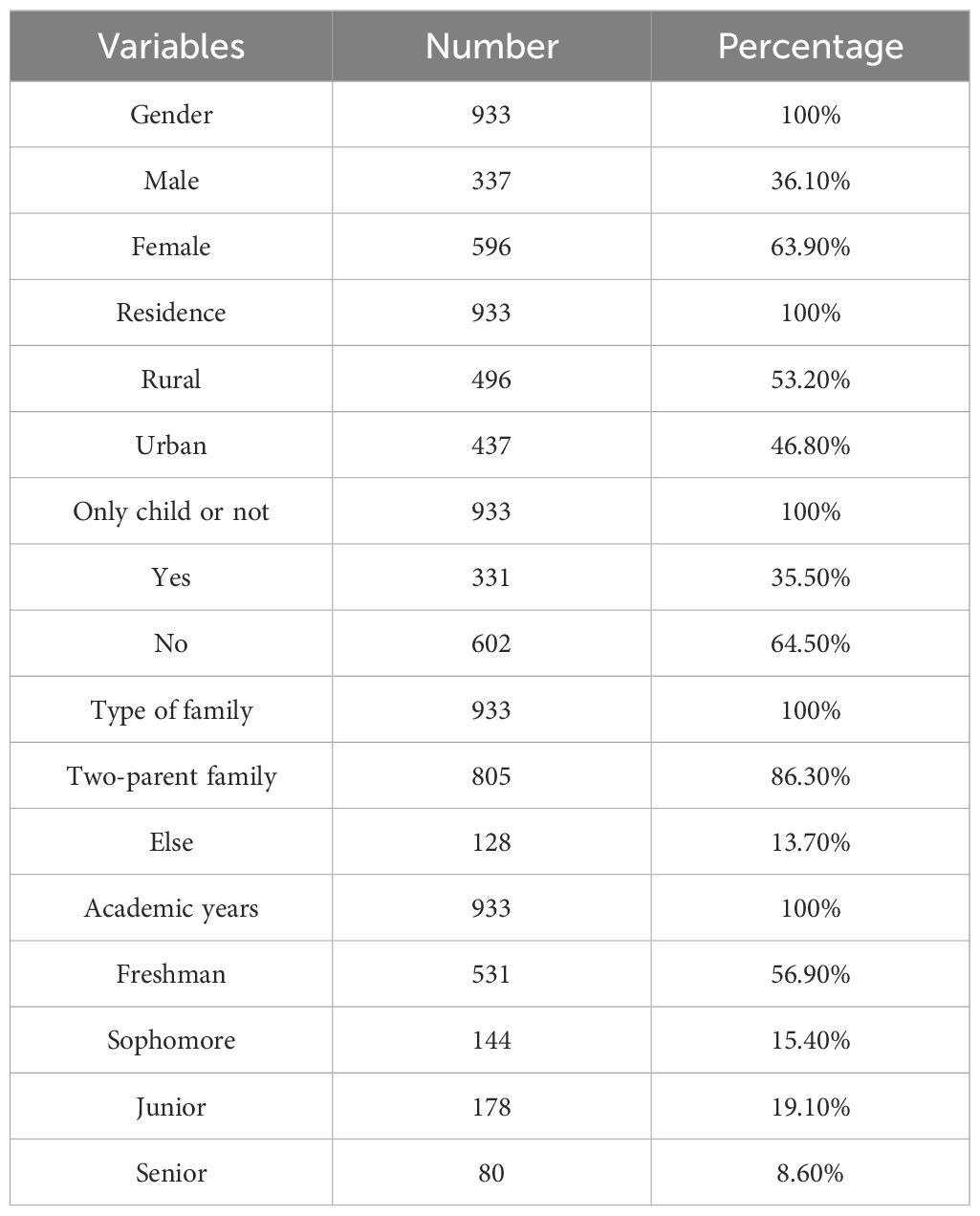
Table 1. Summary of overall sample characteristics.
For the sample population, MPAI’s mean was 28.76 ± 12.22, NAS’s mean was 22.99 ± 7.53, and SDS’s mean was 4.53 ± 4.26. Furthermore, our study examined gender differences across research variables, as indicated by Table 2. The mean MPAI score among males was significantly higher than that among females, with males scoring significantly higher in specific dimensions, including uncontrollability, escapism, withdrawal symptoms, and inefficiency. Conversely, females scored considerably higher than males on the SDS.
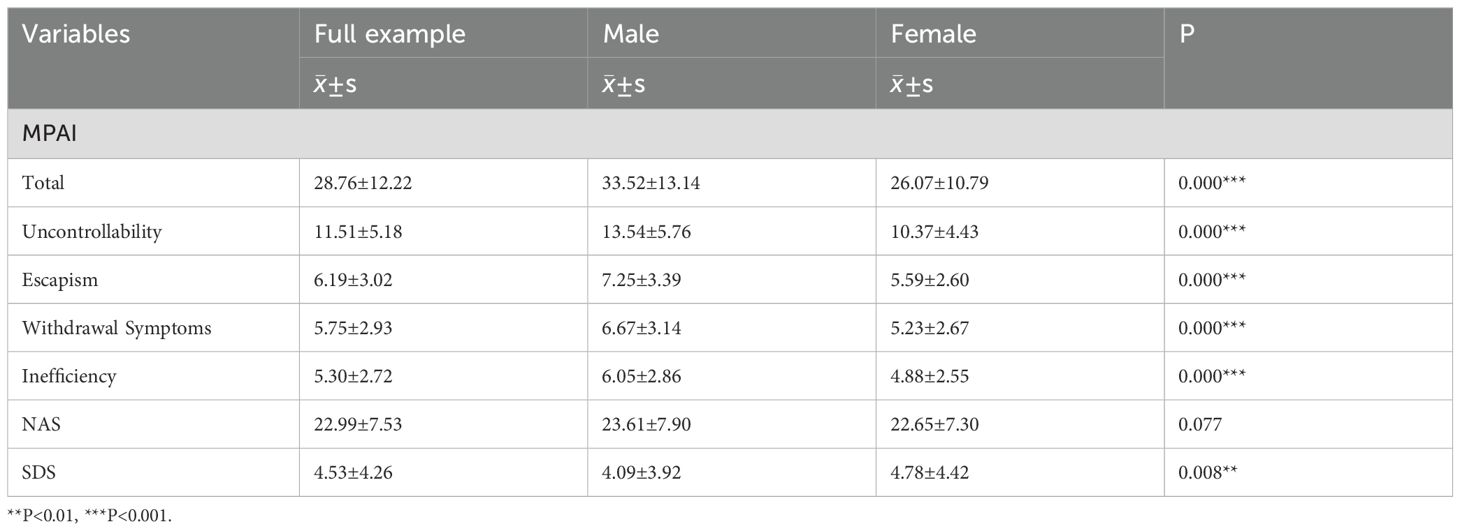
Table 2. Gender differences in variables: results of the Mann-Whitney U test.
3.3 Correlation analysisTo control for demographic variables, a partial correlation analysis was conducted after controlling for gender. The findings, presented in Table 3, reveal significant positive association between smartphone addiction and negative emotions (r = 0.342, p < 0.001) and between smartphone addiction and sleep disorders (r = 0.259, p < 0.001). Additionally, negative emotions were significantly directly associated with sleep disorders. (r = 0.314, p < 0.001).

Table 3. Partial correlation analysis of variables.
3.4 Analysis of the effect of mediationThe mediating role of negative emotions in the relationship between smartphone addiction and sleep disorders was examined using Hayes ‘ (2012) SPSS macro Model 4, with gender controlled for. As shown in Table 4, smartphone addiction showed a significant positive correlation with negative emotions, and both were significantly positively associated with sleep disorders.

Table 4. Examining negative emotions ’ mediation regarding smartphone addiction’s association with sleep disorder among college students.
Figure 2 presents the mediation model, and the findings reveal that all three pathways were statistically significant. The results indicated that smartphone addiction’s overall influence against sleep disorders was 0.270 (p < 0.001). The direct influence was 0.179, with a 95% CI of 0.113–0.246, representing 66.3% of the total influence. The indirect effect mediated by negative emotions was 0.091, with a 95% CI of 0.055–0.132, accounting for 33.7% of the overall influence. These findings suggest that negative emotions mediate smartphone addiction’s association with sleep disorders only partially, supporting Hypothesis 1.
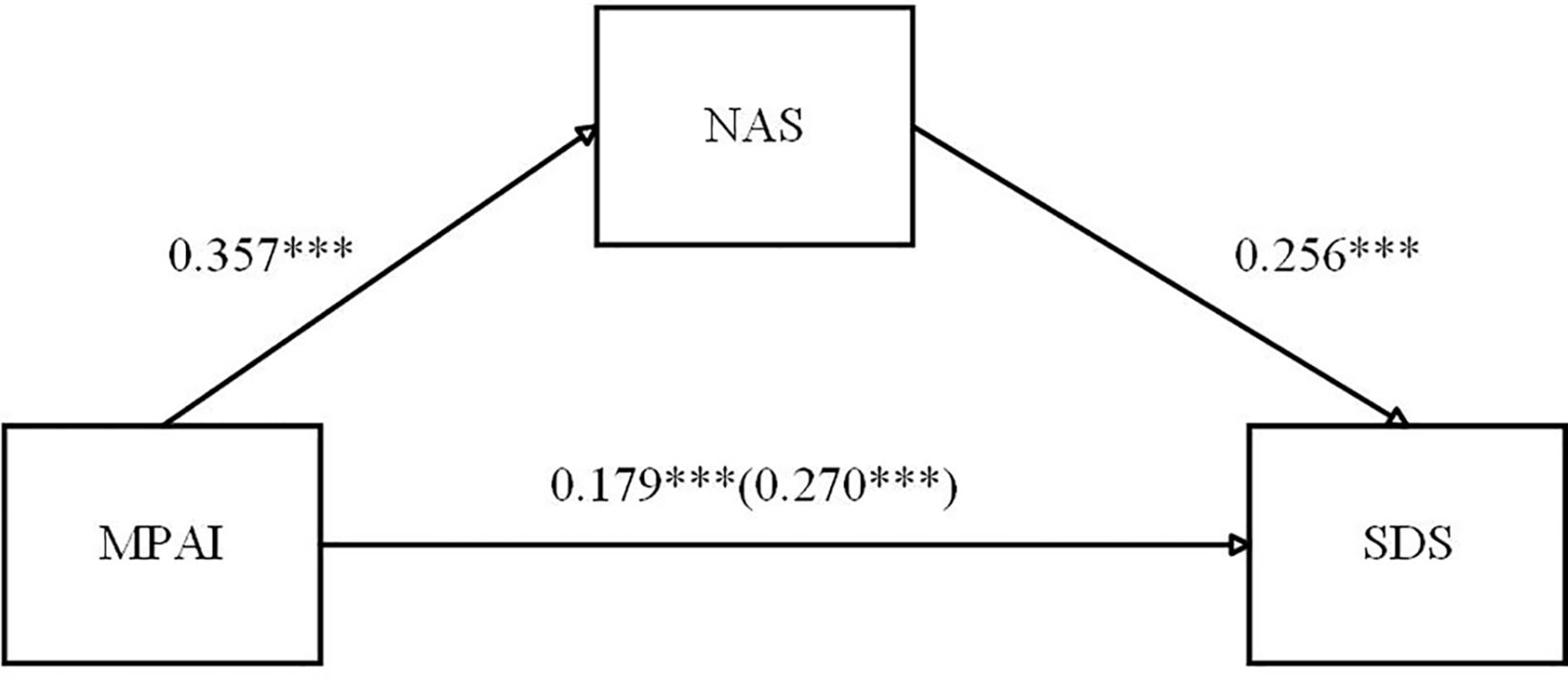
Figure 2. Effect of MPAI on SDS with the mediation of NAS. ***P < 0.001.
3.5 Analysis of the effect of moderated mediationIn Hypothesis 2, we hypothesize that gender moderates the direct and indirect effects of smartphone addiction on sleep disorders in a mediation model involving smartphone addiction, negative emotions, and sleep disorders. To test this hypothesis, the study used Hayes’ PROCESS macro (Model 15) to investigate the moderating effect of gender in the mediation model. Specifically, Hypothesis 2 includes two specific sub-hypotheses: (a) gender moderates smartphone addiction’s association with sleep disorders, and (b) gender moderates negative emotions’ association with sleep disorders. If Hypothesis b is supported, it indicates the existence of a moderated mediation model.
The outcomes that Table 5 presented indicate that gender did not moderate the direct path but influenced the latter portion of the mediation pathway. Specifically, the interaction term between smartphone addiction and gender was insignificant predictor of sleep disorders (β = 0.009, p > 0.05). However, the interaction between gender and negative emotions significantly predicted sleep disorders (β = 0.113, p < 0.01), suggesting gender moderates the link between negative emotions and sleep disorders, thus supporting Hypothesis b. Therefore, the results suggest that Hypothesis 2 is partially supported, and a moderated mediation model is established.
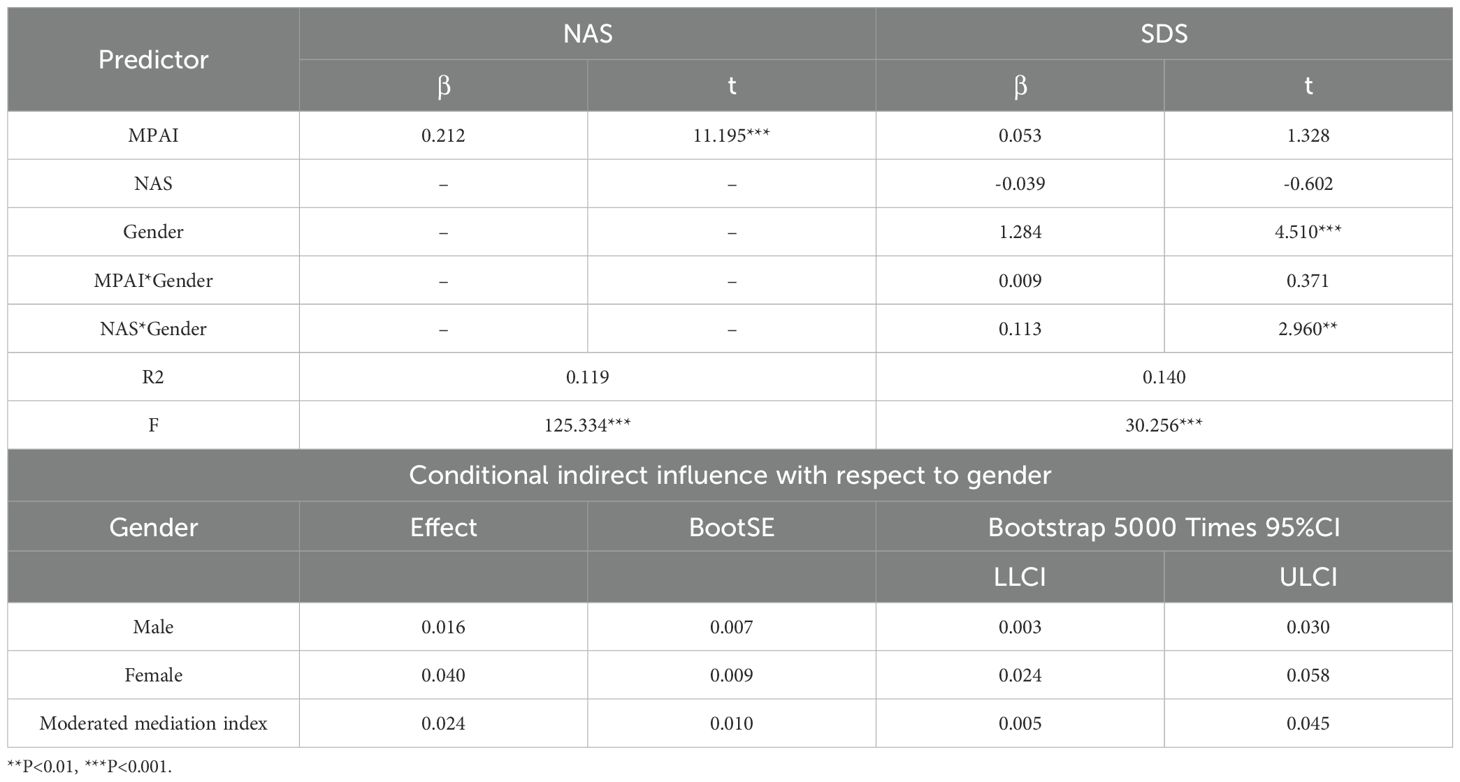
Table 5. Effect of moderated mediation between addiction to smartphone and sleep disorder.
To specifically illustrate how gender moderates the connection between negative emotions and sleep disorders, the study plotted simple slope graphs for negative emotions and sleep disorders, as shown in Figure 3. In the female group, negative emotions significantly predicted sleep disorders (simple slope = 0.187, t = 8.113, p < 0.001); whereas in the male group, the association between negative emotions and sleep disorders was weaker (simple slope = 0.074, t = 2.422, p = 0.016). This suggests that the female group experiences more sleep disorders as negative emotions increase.
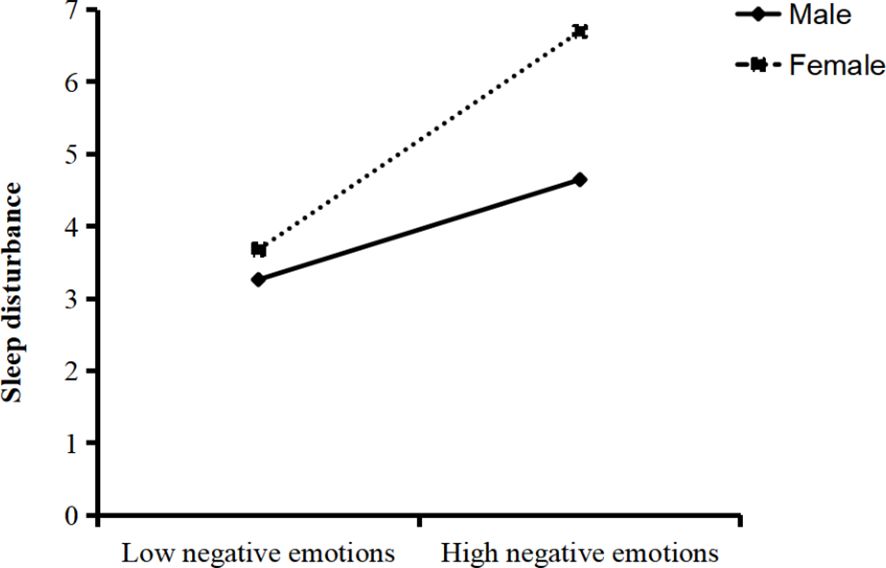
Figure 3. Gender’s moderation in negative emotions and sleep disorder.
4 DiscussionSleep disorder and smartphone addiction have been found to be strongly correlated (65–67). Numerous studies have demonstrated that smartphone addiction contributes to sleep disorder (68).
However, the mediating and regulating mechanisms that account for the connection between smartphone addiction and sleep disorders have not been thoroughly studied. To address these gaps, this study enhances the current literature via constructing a model for moderated mediation. This model investigates how negative emotions mediate smartphone addiction’s association with sleep disorders in college students and explores the moderating role of gender on this mediation. These findings suggest that first association is mediated by negative emotions. Specifically, negative emotions positively predict sleep disorders, whereas smartphone addiction predicts negative emotions. In addition, negative emotions’ association with disturbance during sleep was moderated by gender. This topic is explored in the subsequent section based on the study’s findings.
4.1 Negative emotions’ mediationConsistent with previous researches (20, 21, 69), we found that addiction to smartphone among college students directly associates with sleep disorders. In other words, greater addiction to smartphones was associated with greater sleep disorder. Studies have revealed that college students frequently utilize smartphones for text messaging, phone calls, and gaming (70). This suggests that as the amount of time college students spend on their phones increases, their sleep time decreases accordingly. According to the sleep disorder process theory, heightened emotional or physiological arousal negatively affects sleep quality (71). For instance, the initiation of sleep and the occurrence of mood swings or awakenings during sleep significantly affect sleep quality. Pre-sleep smartphone usage and the type of content browsed contribute to psychological stress and physiological arousal (72), ultimately compromising sleep quality. Furthermore, electromagnetic fields emitted by smartphones can disrupt sleep structure (73), and the use of light-emitting electronic devices suppresses melatonin, extending the time required to fall asleep (74). Collectively, these factors can lead to sleep disorders in college students.
Furthermore, our findings indicate that negative emotions partially mediate the connection between smartphone addiction and sleep disorders. A positive relationship was observed between negative emotions and addiction to smartphone, where higher addiction levels corresponded to increased negative emotions. These findings align with those of Chen et al. (75), who argued that individuals addicted to or at risk of addiction experience greater negative emotions due to the financial and time investments involved. Moreover, some studies have explored how smartphone addiction contributes to negative emotions. For example, Çağan et al. (76) found that the degree of addiction to smartphone is directly associated with depression. Similarly, Demirci et al. (66) identified a direct relationship between smartphone addiction and both depression and anxiety. Jun (14) further demonstrated that smartphone addiction affects depressive symptoms over time. Additionally, we observed a positive relationship between negative emotions and sleep disorders, consistent with previous studies. For instance, research has shown that negative emotions significantly and positively predict sleep quality (23). According to the “conflict internalization model” of insomnia, internalizing psychological conflict increases emotional arousal and physiological activation, negatively affecting sleep (77). Furthermore, studies have demonstrated that negative emotions, such as worry and stress can result in sleep disorders. Jansson-Fröjmark and Lindblom (78) found that high levels of anxiety and depression predict insomnia. Similarly, Staner (79) observed that sleep disorders (especially insomnia) are prevalent in individuals with anxiety disorders. Vandekerckhove et al. (80) reported that stress and emotional factors heighten vulnerability to sleep disorders. Integrating these findings, we used a mediation model method to examine the link between negative emotions and sleep disorder and between smartphone addiction and negative emotions. Our study revealed that college students with greater smartphone addiction experienced more negative emotions, increasing their likelihood of sleep disorders.
These findings offer valuable insights into how negative emotions influence sleep disorders in the context of smartphone addiction and lay the groundwork for strategies aimed at addressing and improving the physical and mental health challenges faced by college students. The findings of this study highlight the critical need to address the negative emotions associated with smartphone addiction among college students. Resource conservation theory suggests that individual actively increase resources to mitigate stress rather than passively waiting for a stressful environment to occur (81). However, smartphone addiction often leads to unpleasant emotions such as worry, stress, and despair. Cognitive emotion regulation strategies are vital for addressing negative events and anxiety and depressive symptoms. Effective regulation can reduce negative emotions and the resource consumption caused by smartphone addiction (82). For example, Liang et al. (83) showed that cognitive emotion regulation affects emotional experience and reduced smartphone addiction and its associated negative emotions. Therefore, parents and teachers should consciously guide college students to learn cognitive emotion regulation strategies, improving emotion regulation skills (65) to reduce negative emotions caused by smartphone addiction and enhance sleep quality. Parents can actively participate in “emotional socialization behavior” in family education, actively guide children’s emotional behavior, and construct a good emotional regulation process (84).Teachers can teach strategies related to cognitive emotion regulation, such as mindfulness techniques in the form of meditation, deep breathing, and focus on the present moment (85), cognitive reassessment (helping individuals re-evaluate maladaptive situations and enhance emotional self-control), and expressive inhibition (inhibiting emotional expression behaviors) (83). In addition, parents and teachers can guide college students to relieve their negative emotional experiences through group impromptu music therapy (a way to release emotions and express themselves through group improvisation of Musical Instruments) and tai chi exercises (86, 87), thereby reducing the occurrence of sleep disorders. To enhance sleep quality among college students, interventions targeting smartphone addiction and emotional regulation are essential.
4.2 Gender’s moderating effectFurther findings confirmed that gender moderates the indirect influence of smartphone addiction on sleep disorders via negative emotions. Specifically, while negative emotions among college students were significantly correlated with sleep disorders, the effect was stronger in females. Our findings align with prior research suggesting that females respond more strongly to negative stimuli than males (88, 89). For example, all sleep difficulties in females were significantly related to stress, emotional regulation, and negative emotions, whereas in males, only difficulties initiating sleep were associated with these factors (90). Consequently, women experience a broader range of sleep disorders when facing negative emotions. This difference may be linked to gender differences in emotion regulation. Two categories of emotion regulation are distinguished under the process model of emotion regulation: one of which is cognitive reappraisal, a strategy used to reinterpret a situation and mitigate the impact of negative emotions (91). Research has shown that poorer sleep quality is associated with a reduced ability to regulate negative emotions through cognitive reappraisal (92). Structural differences in the brains of males and females contribute to differences in their ability to use cognitive reappraisal. McRae et al. (90) argue that males exhibit lower amygdala activity and less prefrontal cortex activity in emotional responses, with the prefrontal cortex being typically involved in cognitive and emotional control. As a result, males may be more likely than females to spontaneously employ cognitive reappraisal strategies, thereby reducing the negative impact of negative emotions on sleep quality.
Based on these findings, schools and society should focus on addressing sleep disorders among college students and establish corresponding support systems to provide help to college students, especially female students. Schools can provide emotion regulation training courses to help students identify and adjust their emotions using strategies such as cognitive reassessment, mindful acceptance, and other such strategies to mitigate the detrimental effects of negative emotions on individuals (93).Society can also provide college students with psychological counseling services. Given that women are more prone to negative emotions throughout their lives (94), targeted support should account for their psychological and physiological characteristics.
4.3 LimitationsAlthough the participants in this study were college students and the results indicated that negative emotions significantly influenced sleep disorders in female students, these findings may also apply to other groups, such as professionals and adolescents, who might experience similar emotional distress and sleep-related issues. Therefore, future research should explore how these relationships manifest across different populations to enhance the generalizability of these findings.
In addition, several limitations of this study should be considered. First, the use of online questionnaires may have influenced the accuracy of the survey findings as the results are more likely to reflect the views of individuals willing to complete the survey. This limitation could affect the generalizability of the research outcomes. Second, reliance on participants ‘ subjective assessment without objective data verification may have introduced inaccuracies. Future studies could address this limitation by incorporating objective assessment methods such as actigraphy and sleep-tracking applications to enhance the reliability of sleep evaluations. Third, this study measured sleep disorders through self-reports rather than clinical diagnoses, making the findings less applicable to clinical populations. Finally, it is impossible to establish causal links between the variables in this study due to its cross-sectional nature. The causal relationships between smartphone addiction, negative emotions, and sleep disorders should be further examined in future longitudinal investigations. Notwithstanding these drawbacks, the study’s conclusions are nonetheless important. These results highlight the significant predictive role of smartphone addiction in sleep disorders and demonstrate, through mediation analysis, that negative emotions exacerbate the effect of smartphone addiction on sleep disorders. In addition, gender as an individual characteristic also moderates addiction to smartphone in relation to sleep disorders.
4.4 ConclusionThis research seeks to unveil how negative emotions mediate smartphone addiction’s association with sleep disorders with respect to college students, as well as moderating influence of gender. It elucidates the interconnected pathways between phone addiction and sleep disorders by examining mediators and moderators. For college students, negative emotions were identified as key mediators of smartphone addiction’s relationship with sleep disorders. Additionally, gender moderated this mediation process, with female students exhibiting a stronger effect of negative emotions on sleep disorders. These findings emphasize the importance of the mediating model in understanding how smartphone addiction contributes to sleep disorder among college students.
Data availability statementThe original contributions presented in the study are included in the article/supplementary material. Further inquiries can be directed to the corresponding author.
Ethics statementThe studies involving humans were approved by The Ethics Committee of Shantou University. The studies were conducted in accordance with the local legislation and institutional requirements. The participants provided their written informed consent to participate in this study.
Author contributionsSL: Methodology, Project administration, Visualization, Writing – original draft, Writing – review & editing. YD: Investigation, Writing – original draft. LC: Investigation, Writing – original draft. LW: Investigation, Writing – original draft.
FundingThe author(s) declare financial support was received for the research, authorship, and/or publication of this article. Funding was provided by the Guangdong Education Research Program: An Empirical Study on Youth Patriotism Education in Guangdong, Hong Kong and Macao Bay Area in the 5G Era(2020GXJK148)、Research on the construction of a blended teacher learning community based on network learning space(Shantou University Research Office Contract-20230209-H)、Educational Environmental Load, Realistic Effects and Adjustment Mechanisms of Junior High School Teachers in Ethnic Areas under the “Double Reduction” Policy(BMA220222)、Study on Cross-cultural Adaptation Problems of Graduate Students Studying in China from Countries Along the “Belt and Road” Route: A Survey Based on Universities in Guangdong Province(181246108).
AcknowledgmentsThe authors express their gratitude to the respondents for their invaluable support and assistance, which significantly contributed to the success of this research.
Conflict of interestThe authors declare that the research was conducted in the absence of any commercial or financial relationships that could be construed as a potential conflict of interest.
Generative AI statementThe author(s) declare that no Generative AI was used in the creation of this manuscript.
Publisher’s noteAll claims expressed in this article are solely those of the authors and do not necessarily represent those of their affiliated organizations, or those of the publisher, the editors and the reviewers. Any product that may be evaluated in this article, or claim that may be made by its manufacturer, is not guaranteed or endorsed by the publisher.
References1. Ricoy MC, Martínez-Carrera S. Digital newspapers’ perspectives about adolescents’ smartphone use. Sustainability. (2021) 13:5316. doi: 10.3390/su13095316
Crossref Full Text | Google Scholar
3. Griffiths M. A ‘components’ model of addiction within a biopsychosocial framework. J Subst Use. (2005) 10:191–7. doi: 10.1080/14659890500114359
Crossref Full Text | Google Scholar
5. Sunday OJ, Adesope OO, Maarhuis PL. The effects of smartphone addiction on learning: a meta-analysis. Comput Hum Behav Rep. (2021) 4:100114. doi: 10.1016/j.chbr.2021.100114
Crossref Full Text | Google Scholar
6. Lee C, Lee SJ. Prevalence and predictors of smartphone addiction proneness among Korean adolescents. Children Youth Serv Review. (2017) 77:10–7. doi: 10.1016/j.childyouth.2017.04.002
Crossref Full Text | Google Scholar
7. Lu G, Ding Y, Zhang Y, Huang H, Liang Y, Chen C. The correlation between mobile phone addiction and coping style among Chinese adolescents: a meta-analysis. Child Adolesc Psychiatry Ment Health. (2021) 15:1–11. doi: 10.1186/s13034-021-00413-2
PubMed Abstract | Crossref Full Text | Google Scholar
8. Wang J, Hao Q, Peng W, Tu Y, Zhang L, Zhu T. Relationship between smartphone addiction and eating disorders and lifestyle among Chinese college students. Front Public Health. (2023) 11:1111477. doi: 10.3389/fpubh.2023.1111477
PubMed Abstract | Crossref Full Text | Google Scholar
9. Volungis AM, Kalpidou M, Popores C, Joyce M. Smartphone addiction and its relationship with indices of social-emotional distress and personality. Int J Ment Health Addiction. (2020) 18:1209–25. doi: 10.1007/s11469-019-00119-9
Crossref Full Text | Google Scholar
10. Zhu W, Liu J, Lou H, Mu F, Li B. Influence of smartphone addiction on sleep quality of college students: the regulatory effect of physical exercise behavior. PloS One. (2024) 19:e0307162. doi: 10.1371/journal.pone.0307162
PubMed Abstract | Crossref Full Text | Google Scholar
11. Enez Darcin A, Kose S, Noyan CO, Nurmedov S, Yilmaz O, Dilbaz N. Smartphone addiction and its relationship with social anxiety and loneliness. Behav Inf Technology. (2016) 35:520–5. doi: 10.1080/0144929X.2016.1158319
Crossref Full Text | Google Scholar
12. Xu L, Wu L, Geng X, Wang Z, Guo X, Song K, et al. A review of psychological interventions for internet addiction. Psychiatry Res. (2021) 302:114016. doi: 10.1016/j.psychres.2021.114016
PubMed Abstract | Crossref Full Text | Google Scholar
14. Jun S. The reciprocal longitudinal relationships between mobile phone addiction and depressive symptoms among Korean adolescents. Comput Hum Behavior. (2016) 58:179–86. doi: 10.1016/j.chb.2015.12.061
Crossref Full Text | Google Scholar
15. Wang S, Matsuda E. The effects of stressful life events and negative emotions in relation to the quality of sleep: a comparison between Chinese and Japanese undergraduate students and Chinese international students. Japanese psychol Res. (2023) 65:99–111. doi: 10.1111/jpr.12363
Crossref Full Text | Google Scholar
16. Li L, Xu DD, Chai JX, Wang D, Li L, Zhang L, et al. Prevalence of internet addiction disorder in Chinese university students: a comprehensive meta-analysis of observational studies. J Behav Addictions. (2018) 7:610–23. doi: 10.1556/2006.7.2018.53
PubMed Abstract | Crossref Full Text | Google Scholar
17. Li Y, Li G, Liu L, Wu H. Correlations between mobile phone addiction and anxiety, depression, impulsivity, and poor sleep quality among college students: a systematic review and meta-analysis. J Behav Addictions. (2020) 9:551–71. doi: 10.1556/2006.2020.00057
PubMed Abstract | Crossref Full Text | Google Scholar
18. Sohn SY, Krasnoff L, Rees P, Kalk NJ, Carter B. The association between smartphone addiction and sleep: a UK cross-sectional study of young adults. Front Psychiatry. (2021) 12:629407. doi: 10.3389/fpsyt.2021.629407
PubMed Abstract | Crossref Full Text | Google Scholar
19. Lane HY, Chang CJ, Huang CL, Chang YH. An investigation into smartphone addiction with personality and sleep quality among university students. Int J Environ Res Public Health. (2021) 18:7588. doi: 10.3390/ijerph18147588
PubMed Abstract | Crossref Full Text | Google Scholar
20. Zhang J, Zhang X, Zhang K, Lu X, Yuan G, Yang H, et al. An updated of meta-analysis on the relationship between mobile phone addiction and sleep disorder. J Affect Disord. (2022) 305:94–101. doi: 10.1016/j.jad.2022.02.008
PubMed Abstract | Crossref Full Text | Google Scholar
21. Kang Y, Liu S, Yang L, Xu B, Lin L, Xie L, et al. Testing the bidirectional associations of mobile phone addiction behaviors with mental distress, sleep disturbances, and sleep patterns: a one-year prospective study among Chinese college students. Front Psychiatry. (2020) 11:634. doi: 10.3389/fpsyt.2020.00634
PubMed Abstract | Crossref Full Text | Google Scholar
22. Chen JK, Wu WC. Reciprocal relationships between sleep problems and problematic smartphone use in Taiwan: cross-lagged panel
留言 (0)